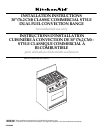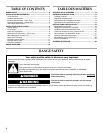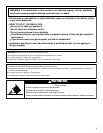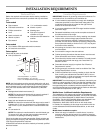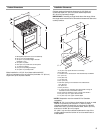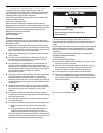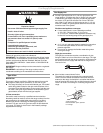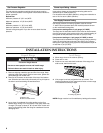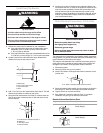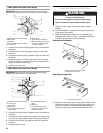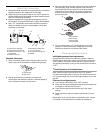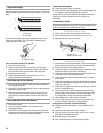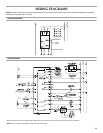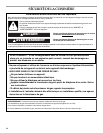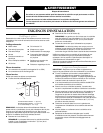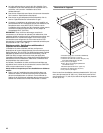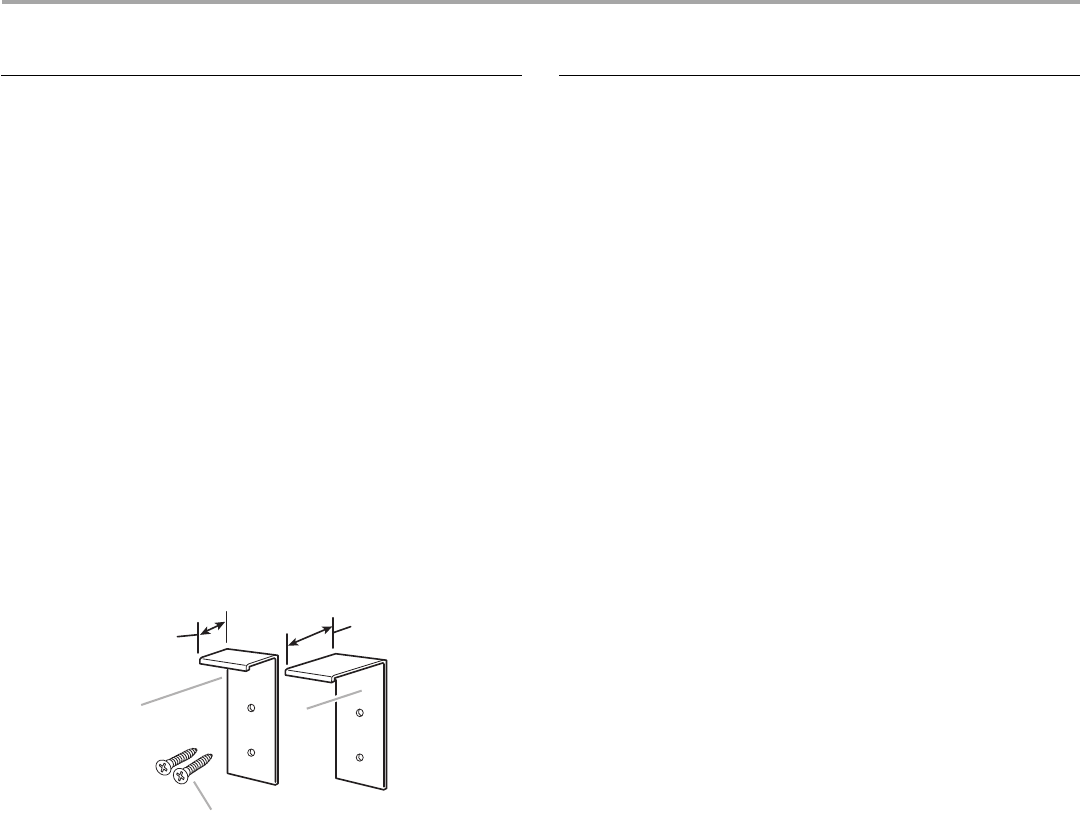
4
INSTALLATION REQUIREMENTS
Tools and Parts
Gather the required tools and parts before starting installation.
Read and follow the instructions provided with any tools listed
here.
Tools needed
Parts needed
■ A UL listed or CSA approved conduit connector
■ UL listed wire connectors
Parts supplied
Check that all parts are included.
■ Anti-tip bracket kit
NOTE: Anti-tip brackets must be securely attached to wall stud.
Thickness of finished wall may require longer mounting screws to
anchor bracket to wall. Longer mounting screws are available
from your local hardware store. See “Install Anti-Tip Bracket”
section.
■ Backguard and attachment screws (7).
NOTE: The backguard included with the range is required if
installed with less than 1" (2.5 cm) clearance from a
combustible rear wall.
■ Island trim and attachment screws (3).
NOTE: The island trim included with the range may be used if
installed with 1" (2.5 cm) clearance from a combustible rear
wall or with 0" (0 cm) clearance from a noncombustible rear
wall.
■ LP conversion kit.
NOTE: The cooktop is manufactured for use with Natural gas.
To convert to LP gas, see the gas conversion instructions
provided in the package containing literature.
Check local codes and consult gas supplier. Check existing gas
supply and electrical supply. See “Electrical Requirements” and
“Gas Supply Requirements” sections.
All electrical connections should be made by a licensed, qualified
electrical installer.
Location Requirements
IMPORTANT: Observe all governing codes and ordinances. Do
not obstruct flow of combustion and ventilation air.
■ It is the installer’s responsibility to comply with installation
clearances specified on the model/serial rating plate. The
model/serial rating plate is located on the right vertical
surface of the oven door frame.
■ It is recommended that a 600 CFM range hood be installed
above the range.
■ Recessed installations must provide complete enclosure of
the sides and rear of the range.
■ To eliminate the risk of burns or fire by reaching over heated
surface units, cabinet storage space located above the
surface units should be avoided. If cabinet storage is to be
provided, the risk can be reduced by installing a range hood
that projects horizontally a minimum of 5" (12.7 cm) beyond
the bottom of the cabinets.
■ All openings in the wall or floor where range is to be installed
must be sealed.
■ Do not seal the range to the side cabinets.
■ Cabinet opening dimensions that are shown must be used.
Given dimensions are minimum clearances.
■ The wall anti-tip bracket must be installed. To install the anti-
tip bracket shipped with the range, see “Install Anti-Tip
Bracket” section.
■ Grounded electrical supply is required. See “Electrical
Requirements” section.
■ Proper gas supply connection must be available. See “Gas
Supply Requirements” section.
■ Contact a qualified floor covering installer to check that the
floor covering can withstand at least 200°F (93°C). Use an
insulated pad or ¼" (0.64 cm) plywood over carpet and under
range if installing range over carpeting.
IMPORTANT: To avoid damage to your cabinets, check with your
builder or cabinet supplier to make sure that the materials used
will not discolor, delaminate or sustain other damage. This oven
has been designed in accordance with the requirements of UL
and CSA International and complies with the maximum allowable
wood cabinet temperatures of 194° (90°C).
Mobile Home - Additional Installation Requirements
The installation of this range must conform to the Manufactured
Home Construction and Safety Standard, Title 24 CFR, Part 3280
(formerly the Federal Standard for Mobile Home Construction
and Safety, Title 24, HUD Part 280). When such standard is not
applicable, use the Standard for Manufactured Home
Installations, ANSI A225.1/NFPA 501A or with local codes.
In Canada, the installation of this range must conform with the
current standards CAN/CSA-A240-latest edition, or with local
codes.
Mobile home installations require:
■ When this range is installed in a mobile home, it must be
secured to the floor during transit. Any method of securing
the range is adequate as long as it conforms to the standards
listed above.
■ Tape measure
■ Flat-blade screwdriver
■ Phillips screwdriver
■ Level
■ Hand or electric drill
■ Wrench or pliers
■ Pipe wrench
■ ¹⁵⁄₁₆" combination wrench
■ Marker or pencil
■ Masking tape
■ Pipe-joint compound
resistant to LP gas
■ Noncorrosive leak-detection
solution
■ Stud finder
A. Anti-tip bracket - 1" (2.5 cm)
B.Anti-tip bracket - 1³⁄₄" (4.4 cm)
C.#10 x 2" Phillips head mounting screws (2)
A
B
(2.5 cm)
1"
1¾"
(4.4 cm)
C



